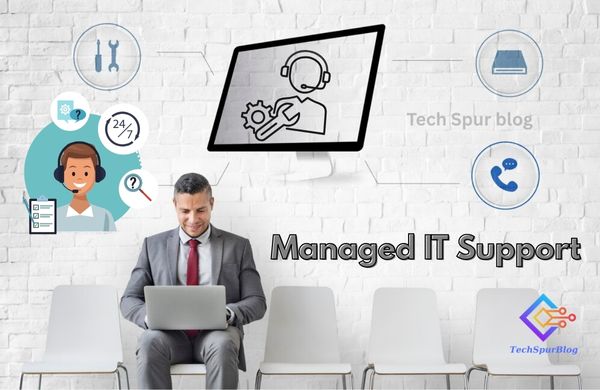As an IT company, you may adopt a hybrid IT business model. It can help you better meet the needs of your customers, who are increasingly using multiple devices and platforms to access information and services. But a hybrid IT model can also create new risks and challenges for your company’s operational resilience.
Operational resilience is an organization’s ability to protect and sustain the core business services when experiencing operational stress or disruption.

Maintaining operational resilience for your Hybrid IT business model is critical to your success. This article will teach you how to do just that. You’ll learn about the different aspects of resilience and how to build a plan that will keep your business running smoothly no matter what happens.
What are Hybrid IT systems?
A hybrid IT system uses a combination of on-premises and cloud-based infrastructure. This type of system has become popular in recent years as businesses strive to find a way to meet the needs of their customers, who are using more and more devices and platforms to access information and services.
Understanding The Basics of Operational Resilience
A resilient business can continue to operate in the face of disruptions. Achieving and maintaining resilience is essential for businesses operating in a hybrid IT environment. There are several factors to consider when making your business more resilient. This article will introduce some of the basics of operational resilience.
The first step is understanding what can disrupt your business. Some of the potential causes are:
a) Natural Disasters:
Earthquakes, hurricanes, floods can all cause physical damage to your business or disrupt essential services.
b) Human Error:
Incidents such as data breaches, system outages, and sabotage can be caused by human error.
c) Technology Failures:
Hardware and software failures, power outages, and telecommunications failures can cause system outages.
d) Supply Chain Disruptions:
A disruption in your supply chain can prevent you from getting the parts or materials you need to run your business.
e) Economic Factors:
Changes in the economy can have a ripple effect on your business. For example, a rise in interest rates can make it more difficult to obtain financing.

Once you understand the risks your business faces, you need to mitigate those risks. Some of the things you can do are:
Disaster Recovery Plan:
Having a plan in place for recovering from a disaster can help you get back up and running quickly. A disaster recovery plan includes:
-An emergency contact list
-A plan for securing your facility
-A plan for evacuating employees
-A plan for restoring essential services
-A plan for communicating with employees
-A budget
Business Continuity Plan:
A business continuity plan can be a comprehensive plan to keep your business running in the event of significant disruption. It includes:
-A plan for continuing operations
-A plan for restoring critical systems
-A plan for communicating with employees
-A plan for managing financial risks
-A plan for recovering data
Risk Management Process:
Implementing a risk management process can help you identify and mitigate risks to your business. The process includes:
-Identifying the risks facing your business
-Assessing the impact of those risks
-Developing strategies to mitigate the risks
-Monitoring the effectiveness of those strategies
Backup and Recovery Procedures:
Having backup and recovery procedures in place can help you quickly restore essential systems in the event of a disruption. Procedures should include:
- Backup schedules
- How backups will be stored
- Restoring data from backups
- Testing backup and recovery procedures
Training Employees:
Employees need to be aware of the business’s risks and what they can do to help mitigate those risks. Training should include:
- What to do in the event of a disaster
- How to respond to an emergency
- How to use backup and recovery procedures
- How to maintain operational resilience in a hybrid IT environment
Benefits of Maintaining Operational Resilience
Operational resilience can help your business:
a) Improved Productivity:
Disruption can cause a loss in productivity as employees are unable to work. Maintaining operational resilience can help minimize the impact of a disruption on productivity.
b) Maintained Customer Satisfaction:
A failing business can lose customers as they look for a more reliable company. Operational resilience helps ensure that your customers are not affected by the disruption.
c) Minimized Financial Losses:
A haywire business can experience financial losses as a result of the disruption. Maintaining resilience can help minimize those losses.
d) Reduced Risk of Business Failure:
An unplanned business is more likely to fail than a business that has maintained operational resilience. Resilient operations can help reduce the risk of business failure.
Final Thoughts
The best way to maintain operational resilience for your hybrid IT business model is to have a well-defined plan and process in place. It will help ensure that your business can continue to operate in the event of a disaster or outage.
Ensure that you have comprehensive backup and recovery procedures in place and test them regularly.

















